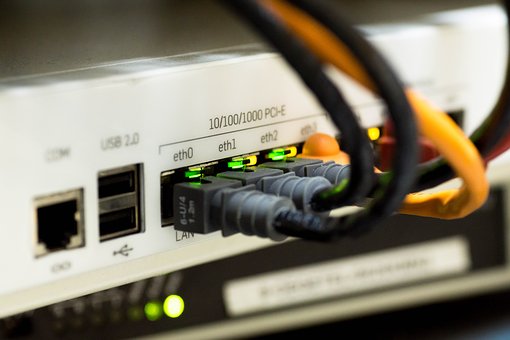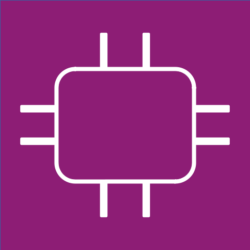Lab setup data from the Pluralsight course on:
Using Docker on AWS
The Complete Obsolete Guide to Generative AI (from Manning) is a lighthearted look at programming with AI, as well as a rock-solid resource for getting the most out of these insanely powerful services. Let it be your guide to analyzing massive data sources, summarize pages and pages of text, and scour the live internet.
NOTE 1.0
These command snippets are meant for people working through the new, fully updated release of the Pluralsight course. If, somehow, you’ve been sent to this page from an older version that doesn’t cover Fargate or Kubernetes, then I would advise you to disregard what you’ve seen. The way AWS handles Docker container workloads has changed substantially since that older version was created and there’s a lot there that’ll just confuse you. Accept no substitutes!
Note 1.1
Although I often recommend running LXC containers as a fantastic virtual environment for experimenting, don’t even think about it for those demos that require Docker CE to be installed locally: since both technologies use abstractions of the host kernel, they’d be stepping all over each other’s feet trying to get things done. Instead, unless you choose to follow along with the command line-based demos directly on an actual physical PC, I would recommend installing VirtualBox, downloading the latest stable LTS Ubuntu ISO file (which would currently be 18.04), and firing up as many VMs as you like. I included a video on working with VirtualBox in my Linux Server Virtualization course.
Note 2.0
You’ll need to make a change to the Dockerfile that installs Apache2 on Ubuntu: instead of:
-
-
-
- RUN apt-get -y install
-
-
The line should read:
-
-
-
- RUN DEBIAN_FRONTEND=”noninteractive” apt-get -y install
-
-
If you don’t do that, the build will stall as it tries to set the system locale. Thanks to a sharp-eyed Pluralsight viewer for catching this and bringing it to my attention. I’ve updated the Dockerfiles themselves below.
Script for installing Docker on Ubuntu
#!/bin/bash sudo apt-get update # Prepare TLS encryption sudo apt-get -y install \ apt-transport-https \ ca-certificates \ curl \ gnupg-agent \ software-properties-common # Add and verify official Docker GPG key curl -fsSL https://download.docker.com/linux/ubuntu/gpg | sudo apt-key add - # Add apt repo sudo add-apt-repository \ "deb [arch=amd64] https://download.docker.com/linux/ubuntu \ $(lsb_release -cs) \ stable" sudo apt-get update # Install Docker CE sudo apt-get -y install docker-ce docker-ce.cli containerd.io
A simple Dockerfile
# Simple Dockerfile # FROM ubuntu:latest RUN apt-get update RUN DEBIAN_FRONTEND="noninteractive" apt-get install -y apache2 RUN echo "Welcome to my web site" > /var/www/html/index.html EXPOSE 80
Build and run a container
docker build -t "webserver" . docker images docker run -d -p 80:80 webserver /usr/sbin/apache2ctl -D FOREGROUND WordPress stack.yml file for local deployment version: '3.1' services: wordpress: image: wordpress ports: - 80:80 environment: WORDPRESS_DB_HOST: db WORDPRESS_DB_USER: wpuser WORDPRESS_DB_PASSWORD: examplepassword WORDPRESS_DB_NAME: wpdb db: image: mysql:5.7 environment: MYSQL_DATABASE: wpdb MYSQL_USER: wpuser MYSQL_PASSWORD: examplepassword MYSQL_RANDOM_ROOT_PASSWORD: '1'
Prepare an EC2 launch type
ecs-cli configure \ --cluster ec2-test-App \ --region us-east-1 \ --default-launch-type EC2 \ --config-name ec2-test-App ecs-cli configure profile \ --access-key <your-access-key> \ --secret-key <your-secret-key> \ --profile-name ec2-test-App ecs-cli up \ --capability-iam \ --size 2 \ --instance-type t2.medium \ --cluster-config ec2-test-App --ecs-profile ec2-test-App docker-compose.yml for EC2 launch version: '3' services: wordpress: image: wordpress ports: - "80:80" links: - mysql mysql: image: mysql:5.7 environment: MYSQL_ROOT_PASSWORD: ecs-params.yml for EC2 launch version: 1 task_definition: services: wordpress: cpu_shares: 100 mem_limit: 524288000 mysql: cpu_shares: 100 mem_limit: 524288000
Launch EC2 type
ecs-cli compose \ --project-name ec2-project service up \ --cluster-config ec2-test-App ecs-cli ps --cluster-config ec2-test-App [shut down:] ecs-cli compose down --cluster-config ec2-test-App ecs-cli down --force --cluster-config ec2-test-App
Prepare a Fargate launch
ecs-cli configure profile \
--profile-name wpfargate \
--access-key <your-access-key> \
--secret-key <your-secret-key>
ecs-cli configure \
--cluster wpfargate \
--region us-east-1 \
--default-launch-type FARGATE \
--config-name wpfargate
{
"Version": "2012-10-17",
"Statement": [
{
"Sid": "",
"Effect": "Allow",
"Principal": {
"Service": "ecs-tasks.amazonaws.com"
},
"Action": "sts:AssumeRole"
}
]
}
aws iam \
--region us-east-1 create-role \
--role-name ecsTaskExecutionRole \
--assume-role-policy-document file://task-execution-assume-role.json
NOTE: You may need to also run this command for the later ecs-compose command to work:
aws iam \ --region us-east-1 attach-role-policy \ --role-name ecsTaskExecutionRole \ --policy-arn arn:aws:iam::aws:policy/service-role/AmazonECSTaskExecutionRolePolicy ecs-cli up --cluster-config wpfargate aws ec2 create-security-group \ --group-name "wpfargate-sg" \ --description "My Fargate security group" \ --vpc-id "vpc-0fd8a0742962a4c7e" aws ec2 authorize-security-group-ingress \ --group-id "sg-056e52a070c1aad48" \ --protocol tcp \ --port 80 \ --cidr 0.0.0.0/0
YAML files for Fargate
nano docker-compose.yml version: '3' services: wordpress: image: wordpress ports: - "80:80" logging: driver: awslogs options: awslogs-group: wpfargate awslogs-region: us-east-1 awslogs-stream-prefix: wordpress nano ecs-params.yml version: 1 task_definition: task_execution_role: ecsTaskExecutionRole ecs_network_mode: awsvpc task_size: mem_limit: 0.5GB cpu_limit: 256 run_params: network_configuration: awsvpc_configuration: subnets: - "subnet-0ea714f5de083febd" - "subnet-03157b03dac355069" security_groups: - "sg-056e52a070c1aad48" assign_public_ip: ENABLED
Launch Fargate type
ecs-cli compose \ --project-name wpfargate service up \ --create-log-groups \ --cluster-config wpfargate \ --cluster wpfargate ecs-cli ps --cluster wpfargate ecs-cli compose \ --project-name wpfargate service down \ --cluster-config wpfargate ecs-cli down \ --force \ --cluster-config wpfargate Install eksctl, kubectl, and aws-iam-authenticator curl --silent --location "https://github.com/weaveworks/eksctl/releases/download/latest_release/eksctl_$(uname -s)_amd64.tar.gz" | tar xz -C /tmp sudo mv /tmp/eksctl /usr/local/bin eksctl version curl -o kubectl https://amazon-eks.s3.us-west-2.amazonaws.com/1.19.6/2021-01-05/bin/linux/amd64/kubectl ls curl -o kubectl.sha256 https://amazon-eks.s3.us-west-2.amazonaws.com/1.19.6/2021-01-05/bin/linux/amd64/kubectl.sha256 ls cat kubectl.sha256 openssl sha1 -sha256 kubectl chmod +x ./kubectl mkdir bin cp kubectl bin export PATH=$HOME/bin:$PATH echo 'export PATH=$HOME/bin:$PATH' >> ~/.bashrc kubectl version --short --client curl -o aws-iam-authenticator https://amazon-eks.s3-us-west-2.amazonaws.com/1.12.7/2019-03-27/bin/linux/amd64/aws-iam-authenticator curl -o aws-iam-authenticator.sha256 https://amazon-eks.s3-us-west-2.amazonaws.com/1.12.7/2019-03-27/bin/linux/amd64/aws-iam-authenticator.sha256 ls openssl sha1 -sha256 aws-iam-authenticator chmod +x ./aws-iam-authenticator cp aws-iam-authenticator bin/ aws-iam-authenticator help
Build Kubernetes cluster and download YAML files
eksctl create cluster \ --name wp-cluster \ --version 1.12 \ --nodegroup-name standard-workers \ --node-type t3.medium \ --nodes 3 \ --nodes-min 1 \ --nodes-max 4 \ --node-ami auto kubectl create secret generic mysql-pass --from-literal=password=bigsecret kubectl get secrets curl https://raw.githubusercontent.com/kubernetes/website/master/content/en/examples/application/wordpress/mysql-deployment.yaml > mysql-deployment.yaml curl https://raw.githubusercontent.com/kubernetes/website/master/content/en/examples/application/wordpress/wordpress-deployment.yaml > wordpress-deployment.yaml
Build Apache webserver container on Docker CE
# Simple Apache Dockerfile # FROM ubuntu:latest RUN apt-get update RUN DEBIAN_FRONTEND="noninteractive" apt-get install -y apache2 CMD /usr/sbin/apache2ctl -D FOREGROUND EXPOSE 80 docker build -t newserver . docker run -d -p 80:80 newserver
Apache on ECS
docker-compose.yml version: '3' services: apache: image: dbclinton/newserver ports: - "80:80" ecs-params.yml version: 1 task_definition: services: apache: cpu_shares: 100 mem_limit: 524288000 ecs-cli configure \ --cluster ec2cluster2 \ --region us-east-1 \ --default-launch-type EC2 \ --config-name ec2cluster2 ecs-cli configure profile \ --access-key <your-access-key> \ --secret-key <your-secret-key> \ --profile-name ec2cluster2 ecs-cli up \ --capability-iam \ --size 1 \ --instance-type t3.medium \ --cluster-config ec2cluster2 ecs-cli compose \ --project-name ec2cluster service up \ --cluster-config ec2cluster2
ECR authentication and administration
aws ecr get-login --no-include-email --region us-east-1 aws ecr create-repository --repository-name newrepo aws ecr describe-repositories
docker images
docker-compose.yml version: '3' services: apache: image: 297972716276.dkr.ecr.us-east-1.amazonaws.com/newrepo:latest ports: - "80:80" ecs-params.yml version: 1 task_definition: services: apache: cpu_shares: 100 mem_limit: 524288000 ecs-cli configure \ --cluster ec2cluster \ --region us-east-1 \ --default-launch-type EC2 \ --config-name ec2cluster ecs-cli configure profile \ --access-key <your-access-key> \ --secret-key <your-secret-key> \ --profile-name ec2cluster ecs-cli up \ --capability-iam \ --size 1 \ --instance-type t3.medium \ --cluster-config ec2cluster ecs-cli compose \ --project-name ec2cluster service up \ --cluster-config ec2cluster ecs-cli ps --cluster-config ec2cluster ecs-cli compose \ --project-name ec2cluster service down \ --cluster-config ec2cluster ecs-cli down --force --cluster-config ec2cluster


